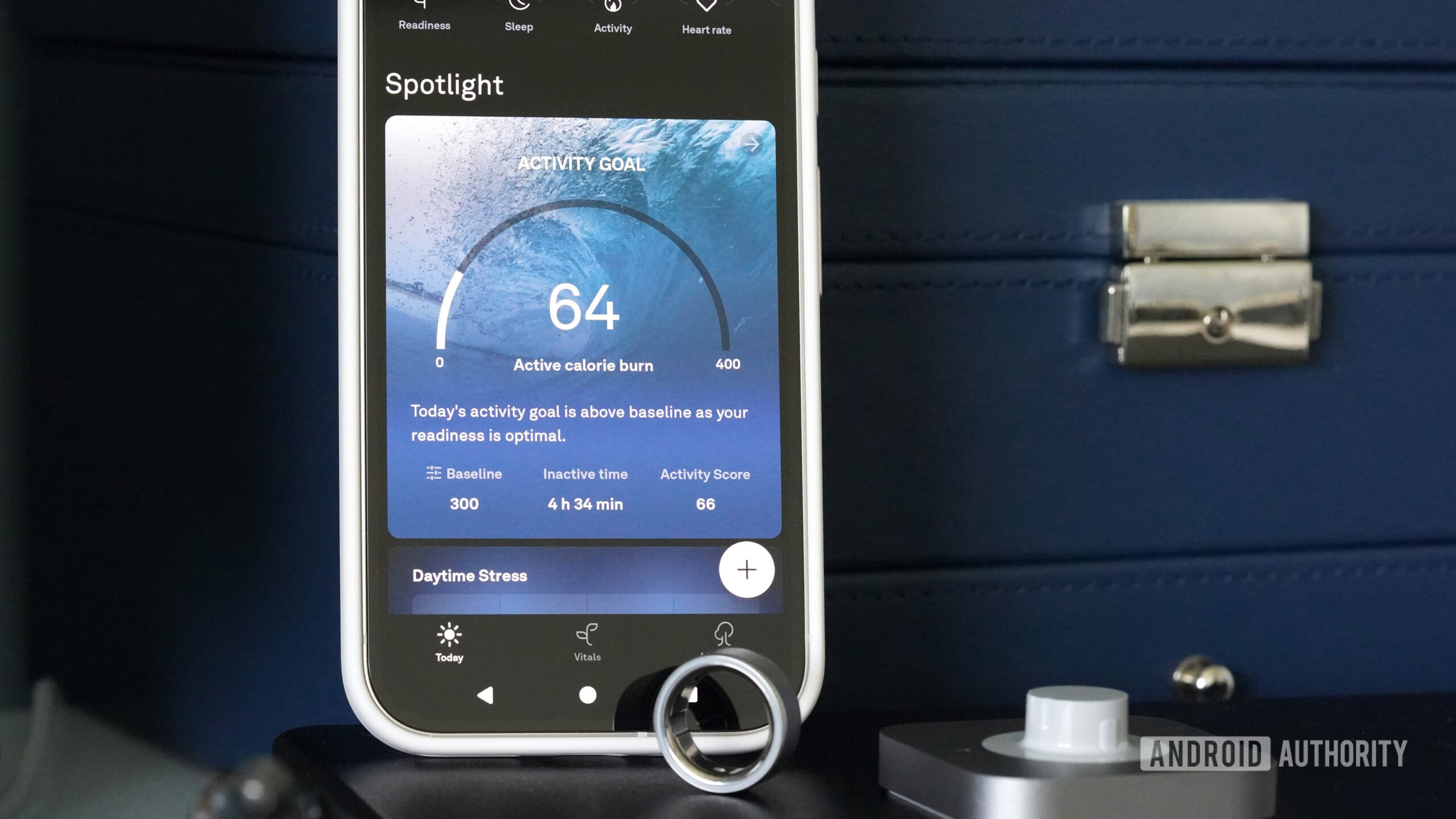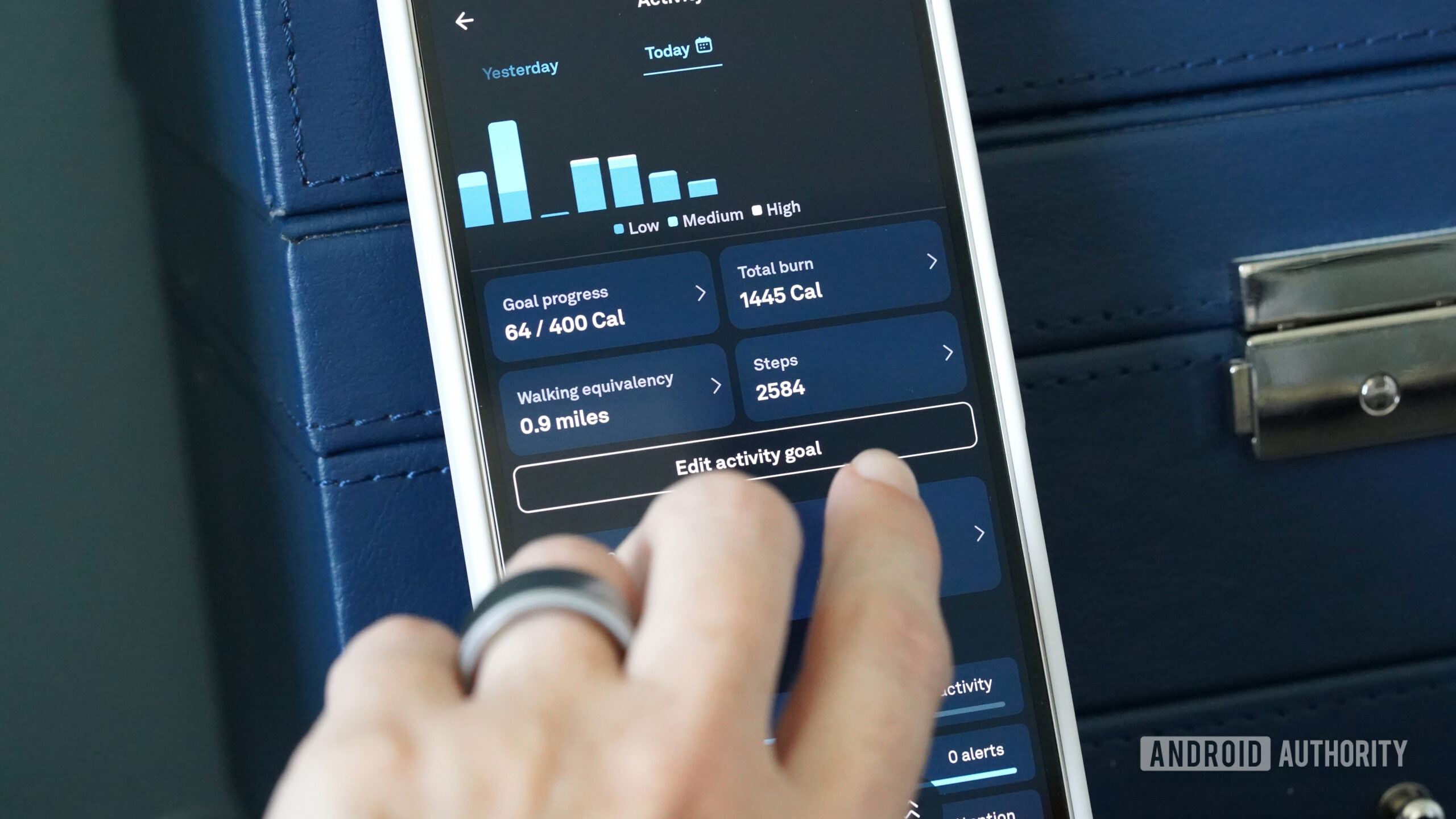
Kaitlyn Cimino / Android Authority
For a long time, Oura’s been more of a sleep and wellness tracker than an activity one. With the latest round of updates, though, it’s clear Oura isn’t resting on its rest-tracking laurels. The company is starting to deliver more usable fitness tracking tools, potentially taking real swings at the Fitbits and Apple Watches of the world. For me, the smart ring still has a ways to go, but it’s definitely moving in the right direction.
Oura’s latest activity updates
I’m a few days in with Oura’s latest activity tracking updates, which rolled out in mid-April. At a glance, the refinements are all about smarter, more meaningful activity tracking. The biggest change for me is now being able to edit or add workouts from the past week. Thanks to the smart ring’s set-and-forget nature, I don’t always remember to add my workouts, and the mess of missing data used to be a pain. Now, Oura lets you fill in the gaps from the past seven days and retroactively updates your Readiness and Activity scores.
Oura tracks activity 24/7 and lets users edit and add workouts from seven days ago.
Likewise, Oura also made automatic activity detection a 24/7 affair, adding in the previously discounted time between midnight and 4 a.m. Activity during these hours now appears as part of the previous day’s data, which I find to be a more logical approach. I’m not so much a night owl as a no-sleep owl, and after-hours are often the best time for me to squeeze in a strength workout or yoga session. My workouts now actually exist in the app, not just in the twilight zone. If you spend your late nights at the club or work a night shift, that activity will now count as well.

Kaitlyn Cimino / Android Authority
Meanwhile, the ring still tracks steps on its own without any input. To that end, Oura introduced Real Steps, a new step-counting system that uses machine learning to tell the difference between an actual step and other hand movements. Instead of overestimating my activity every time Hot To Go comes on, my Oura Ring 4 should be able to distinguish bad dancing from calorie-burning steps. It’s a no-brainer update, but still a fitness-minded move that makes the ring a more attractive option for activity buffs. Like other users have reported, my step count dropped about 10% following the update, and while that was a little jarring at first, it’s hopefully a sign that the data is more legit.
With that said, the Oura Ring still has some kinks to work out. According to the company, if you walk on a treadmill holding the rail, Oura might miss a chunk of your steps. The company is aware of the bug and is working to improve users’ data in such instances. These days, I clock a lot of neighborhood laps pushing a stroller, and the consequential lack of hand movement means not all of my steps register. I’d love to see the company figure out a way to recapture that data so my step count reflects my day more accurately. If I don’t get credit for propelling myself — and a second human — around the block, did it even happen?
The platform still needs some refinement but it’s moving in the right direction.
Lastly, calorie burn now reflects workout intensity, which is a no-brainer, but still a welcome update. If you’re breaking a sweat, your in-app data will show it. My sweat-inducing rows finally get the credit they deserve, while slower stuff like walking burns fewer calories, keeping the big picture honest. It makes sense that high-intensity sessions get you to your Activity Goal faster.
All of this tells me one thing: Oura isn’t content with its sleep-tracking crown. Oura’s not just listening to users; it’s actively building the kind of features that could make it a serious alternative to bulky fitness trackers. Coupling a clearer picture of how I’m moving with its useful recovery insights could earn my Oura Ring 4 a top spot in my wearables round-up. If nothing else, a commitment to activity tracking improvements keeps the ring competitive against Samsung’s Galaxy Ring.








